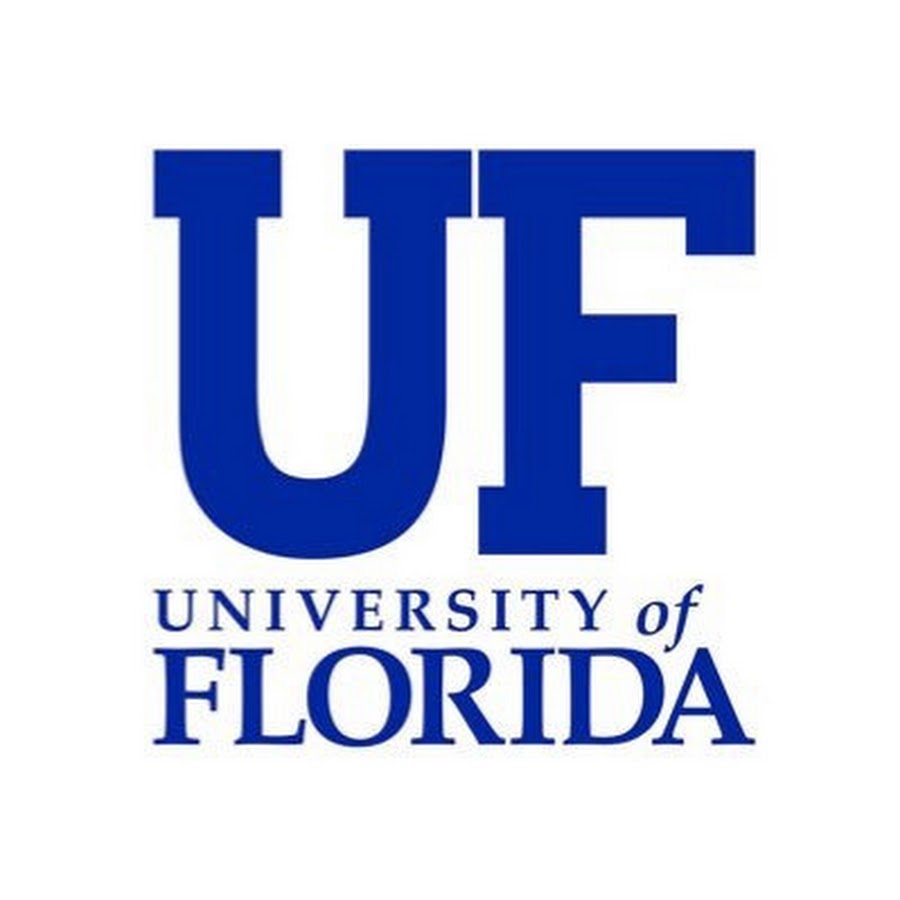 {width=10%} Multi-trait and multi-environment strategies for Genomic Selection (GS)
{width=10%} Multi-trait and multi-environment strategies for Genomic Selection (GS)
## 1. Introduction to simulations pipeline Simulations have been demonstrated as a powerful tool to improve animal and plant breeding programs. In addition, those tools may offer an alternative to address theoretical concepts in quantitative genetics and breeding. Here, we will use `AlphaSimR` package (Gaynor et al. 2021). The package uses stochastic simulations for design and optimization of breeding programs. The package offers a fast, simple, and inexpensive way to test alternative breeding programs. ```{r} rm(list=ls()) #install.packages("AlphaSimR") require(AlphaSimR) ``` For a whole set of simulations, four simple steps must be included, as follows: 1. Simulate founder genomes/haplotypes. 2. Set global simulation parameters for a target trait. 3. Modeling the breeding program. 4. Examining results by looking into population individuals. ## 2. Multi-trait information over several cycles Breeding programs are often targeting the improvement of several traits at a time. However, in a multi-trait framework, we may consider the correlations in-between the traits. Correlation may vary from -1 to 1, and the signal and the magnitude will impact the response with selection. Here, we will use `AlphaSimR` to simulate three scenarios, with different strategy in selection and with different correlations in-between pair of traits. ### Positive correlation First, we will check a case where two traits were simulated, with a positive correlation between them. In addition, the selection will be made in only one trait and we will be able to measure the indirect response in the other trait. ```{r} rm(list=ls()) require(AlphaSimR) set.seed(53627) #--- 1. Founder genome founderGen = runMacs(nInd = 100, nChr = 10, segSites = 100, species = "MAIZE") SP = SimParam$new(founderGen) #--- 2. Define the traits means = c(100, 100) vars = c(10, 20) cors = matrix(data = c( 1.0, 0.3, 0.3, 1.0), byrow = TRUE, nrow = 2, ncol = 2) h2s = c(0.5, 0.5) SP$addTraitA(nQtlPerChr = 100, mean = means, var = vars, corA = cors) ``` Create the base population for later selection. ```{r} # Base population basePop = newPop(founderGen) # Phenotype the population basePop = setPheno(basePop, h2 = h2s) ``` Plotting the phenotypic and genetic mean/variances through several generations of breeding. ```{r} # Store the results nGenerations = 10 + 1 # +1 to store starting generation meanG = vector("list", length = nGenerations) varG = vector("list", length = nGenerations) # Save the starting values meanG[[1]] = meanG(basePop) varG[[1]] = varG(basePop) # First selection step nSelected = 20 newPopSelected = selectInd(pop = basePop, nInd = nSelected, use = "pheno", trait = 1) # Selection over many generations for (generation in 1:(nGenerations - 1)) { newPop = randCross(newPopSelected, nCrosses = nInd(basePop)) newPop = setPheno(newPop, h2 = h2s) newPopSelected = selectInd(pop = newPop, nInd = nSelected, use = "pheno", trait = 1) # Save summaries meanG[[1 + generation]] = meanG(newPop) varG[[1 + generation]] = varG(newPop) } # Plot results meanGTrait1 = sapply(meanG, function(x) x[1]) meanGTrait2 = sapply(meanG, function(x) x[2]) meanRanges = range(c(meanGTrait1, meanGTrait2)) varGTrait1 = sapply(varG, function(x) x[1, 1]) varGTrait2 = sapply(varG, function(x) x[2, 2]) varRanges = range(c(varGTrait1, varGTrait2)) # Plot mean of genetic values over time plot(x = 1:nGenerations, y = meanGTrait1, type = "l", col = "blue", lwd = 3, xlab = "Generation", ylab = "Mean of genetic values", ylim = meanRanges) lines(x = 1:nGenerations, y = meanGTrait2, type = "l", col = "blue", lty = 3, lwd = 3) legend(x = "topleft", legend = c("1", "2"), title = "Trait", lwd = 3, lty = c(1, 3), col = c("blue", "blue")) ```
### Negative correlation The second example will consider two traits with negative correlation, for the same breeding program. ```{r} rm(list=ls()) set.seed(53627) founderGen = runMacs(nInd = 100, nChr = 10, segSites = 100, species = "MAIZE") SP = SimParam$new(founderGen) # Define the traits means = c(100, 100) vars = c(10, 20) cors = matrix(data = c( 1.0, -0.6, -0.6, 1.0), byrow = TRUE, nrow = 2, ncol = 2) h2s = c(0.5, 0.5) SP$addTraitA(nQtlPerChr = 100, mean = means, var = vars, corA = cors) ``` Create the base population for later selection ```{r} # Base population basePop = newPop(founderGen) # Phenotype the population basePop = setPheno(basePop, h2 = h2s) ``` Plotting the phenotypic and genetic mean through several generations of breeding. ```{r, echo=TRUE} # Store the results nGenerations = 10 + 1 # +1 to store starting generation meanG = vector("list", length = nGenerations) varG = vector("list", length = nGenerations) # Save the starting values meanG[[1]] = meanG(basePop) varG[[1]] = varG(basePop) # First selection step nSelected = 20 newPopSelected = selectInd(pop = basePop, nInd = nSelected, use = "pheno", trait = 1) # Selection over many generations for (generation in 1:(nGenerations - 1)) { newPop = randCross(newPopSelected, nCrosses = nInd(basePop)) newPop = setPheno(newPop, h2 = h2s) newPopSelected = selectInd(pop = newPop, nInd = nSelected, use = "pheno", trait = 1) # Save summaries meanG[[1 + generation]] = meanG(newPop) varG[[1 + generation]] = varG(newPop) } # Plot results meanGTrait1 = sapply(meanG, function(x) x[1]) meanGTrait2 = sapply(meanG, function(x) x[2]) meanRanges = range(c(meanGTrait1, meanGTrait2)) varGTrait1 = sapply(varG, function(x) x[1, 1]) varGTrait2 = sapply(varG, function(x) x[2, 2]) varRanges = range(c(varGTrait1, varGTrait2)) # Plot mean of genetic values over time plot(x = 1:nGenerations, y = meanGTrait1, type = "l", col = "blue", lwd = 3, xlab = "Generation", ylab = "Mean of genetic values", ylim = meanRanges) lines(x = 1:nGenerations, y = meanGTrait2, type = "l", col = "blue", lty = 3, lwd = 3) legend(x = "topleft", legend = c("1", "2"), title = "Trait", lwd = 3, lty = c(1, 3), col = c("blue", "blue")) ```
## 3. Genomic selection using multiple-trait information In this practice, we will show how to implement Genomic prediction/Genomic selection models in a Multi-trait multienvironment framework. To perform the analyses, we will need the following packages: ```{r echo=FALSE, warning=FALSE,eval=TRUE} rm(list=ls()) require(AGHmatrix) require(BGLR) require(tidyverse) require(dplyr) require(ggplot2) ```
### Dataset This dataset was simulated using the coalescent theory implemented in $AlphasimR$ package [@gaynor2021alphasimr]. This dataset mimic an evaluation of 500 maize genotypes, in six location, and four traits were measured. Also, a set of 3000 single nucleotide polymorphism (SNPs) were randomly sampled through the 10 pair of chromosomes. **Phenotypic data** We generated BLUEs (best linear unbiased estimation) for each trait, and it can be loaded from *Phenotypes.csv*. ```{r echo=TRUE} # Loading the data Phenotypes = read.csv("Phenotypes.csv") # As factor Phenotypes$Genotype = Phenotypes$Genotype %>% as.factor Phenotypes$Env = Phenotypes$Env %>% as.factor ``` ```{r} Phenotypes[,c(1,3:6)] %>% pivot_longer(., cols = c('Trait1','Trait2','Trait3','Trait4')) %>% ggplot(., aes(x = Env, y = value)) + geom_boxplot(color="brown", fill="orange", alpha=0.2) + theme(strip.text = element_text(face = "bold", size = 20, colour = 'blue'))+ labs(x = 'Environment', title = "Traits (BLUEs) distribution across environments",y="Density")+ facet_wrap(~name,scales = "free") ```
Using the trait 1 over four environments. ```{r echo=TRUE, eval=TRUE} # Organizing the phenotypic data Y<- Phenotypes[,c(1,2,3)] %>% pivot_wider(., names_from = 'Env', values_from = 'Trait1') # Scale the data y = scale(Y[,-1]) head(y) ```
**Genomic data** The genomic data (3000 SNP markers) was coded as 0,1,2 for aa,Aa,AA, respectively. The dataset for all 500 genotypes can be loaded from **Genotypes.csv**. ```{r echo=FALSE} # SNPs Genotypes = as.matrix(read.csv("Genotypes.csv")) #Names rownames(Genotypes)= unique(Phenotypes$Genotype) ``` **Creating G Matrix** Here, we will compose the additive relationship matrix (*G* matrix) following the propositions made by @vanraden2008efficient. ```{r echo=FALSE, eval=TRUE} # Additive matrix G.Mat = AGHmatrix::Gmatrix(Genotypes) ```
### Multitrait Model **Statistical model** The **GBLUP** model in a multitrait framework is given as follows: $$ y = 1u + Za + e $$ where $y$ is the matrix of BLUEs data for the target traits; $u$ represents the mean (fixed); $a$ is the matrix of genotype effects (assumed to be random), where $a \sim N(0,\sum_a\otimes G)$, $G$ is a matrix that describes the genomic similarities between pair of genotypes and $\sum_a$ represents the genetic covariance matrix; and $e$ is the residuals (random), where $e\sim N(0,\sum_{res}\otimes I)$, $\sum_{res}$ is the residual covariance matrix. The letter $Z$ refers to the incidence matrix for $a$. Here, we use the 'Multitrait()' function from BGLR package for fitting the model [@perez2022multitrait]
## 4. Model 1 - CV1 ### **Multitrait model** ```{r, eval=TRUE} # CROSS-VALIDATION CV1 (Predicting traits for new lines) #--- 1. Setting the NA's set.seed(12345) yNA2 <- y yNA2[sample(1:dim(Y)[1],100),] <- NA #--- 2. Model fm2 <- Multitrait( y = yNA2, ETA = list(A=list(K=G.Mat, model='RKHS', Cov = list(type = 'UN'))), resCov = list(type = 'DIAG'), nIter = 1200, burnIn = 120, thin = 5, verbose = FALSE) #--- 3. Extracting the estimated parameters YHatInt2 <- fm2$ETAHat #--- 4. Predictive correlation test2<-is.na(yNA2) tstB<-test2[,1] # Same position for all traits CORB.T1<-cor(YHatInt2[tstB,1],y[tstB,1]) CORB.T2<-cor(YHatInt2[tstB,2],y[tstB,2]) CORB.T3<-cor(YHatInt2[tstB,3],y[tstB,3]) CORB.T4<-cor(YHatInt2[tstB,4],y[tstB,4]) #--- 4. Extracting estimates of variance parameters (CORB.RES<-fm2$resCov$R) # residual covariance matrix (CORB.u<-fm2$ETA[[1]]$Cov$Omega) # genetic covariance matrix UE #--- 5. Trait correlation cov2cor(CORB.u) ```
### **Single trait model** ```{r, eval=TRUE} #--- 1. Run single trait yB1NA <- yNA2[,1] #Trait 1 yB2NA <- yNA2[,2] #Trait 2 yB3NA <- yNA2[,3] #Trait 3 yB4NA <- yNA2[,4] #Trait 4 #--- 2. Model ETA2 <- list(a = list(K=G.Mat,model='RKHS')) fmB1 <- BGLR(yB1NA,ETA=ETA2,nIter=1200,burnIn=120,verbose=FALSE) fmB2 <- BGLR(yB2NA,ETA=ETA2,nIter=1200,burnIn=120,verbose=FALSE) fmB3 <- BGLR(yB3NA,ETA=ETA2,nIter=1200,burnIn=120,verbose=FALSE) fmB4 <- BGLR(yB4NA,ETA=ETA2,nIter=1200,burnIn=120,verbose=FALSE) #--- 3. Correlations CORB.ST1 <- cor(fmB1$yHat[tstB],y[tstB,1]) CORB.ST2 <- cor(fmB2$yHat[tstB],y[tstB,2]) CORB.ST3 <- cor(fmB3$yHat[tstB],y[tstB,3]) CORB.ST4 <- cor(fmB4$yHat[tstB],y[tstB,4]) ``` ### **Correlation for the models (MT and ST)** ```{r, echo=TRUE, eval=TRUE} #--- 1. Correlation output from both models CorCV1 <- matrix(NA,nrow=4,ncol=2) colnames(CorCV1) <- c('MT','ST') # MTM CorCV1[1,1] <- CORB.T1 CorCV1[2,1] <- CORB.T2 CorCV1[3,1] <- CORB.T3 CorCV1[4,1] <- CORB.T4 # STM CorCV1[1,2] <- CORB.ST1 CorCV1[2,2] <- CORB.ST2 CorCV1[3,2] <- CORB.ST3 CorCV1[4,2] <- CORB.ST4 #--- 2. Comparison table CorCV1 ```
## 5. Model 2 - CV2 ### **Multi trait model** ```{r echo=TRUE, eval=TRUE} ## CROSS-VALIDATION CV2 (Partial Information via Associated Traits) #--- 1. Set to NA the set.seed(524521) yNA <-y yNA[sample(1:dim(Y)[1],100),1] <- NA yNA[sample(1:dim(Y)[1],100),2] <- NA yNA[sample(1:dim(Y)[1],100),3] <- NA yNA[sample(1:dim(Y)[1],100),4] <- NA head(yNA, 10) #--- 2. Model fm <- Multitrait(y = yNA, ETA = list(A=list(K = G.Mat, model='RKHS', Cov = list(type = 'UN'))), nIter = 1200, burnIn = 120, thin = 5, verbose = FALSE) #--- 3. Extracting the estimated parameters YHatInt <- fm$ETAHat #--- 4. Predictive correlation test<-is.na(yNA) tst1<-test[,1];tst2<-test[,2]<-tst3<-test[,3];tst4<-test[,4] COR.T1<-cor(YHatInt[tst1,1],y[tst1,1]) COR.T2<-cor(YHatInt[tst2,2],y[tst2,2]) COR.T3<-cor(YHatInt[tst3,3],y[tst3,3]) COR.T4<-cor(YHatInt[tst4,4],y[tst4,4]) #--- 5. Extracting estimates of variance parameters (COR.RES<-fm$resCov$R) # residual covariance matrix (COR.u<-fm$ETA[[1]]$Cov$Omega) # genetic covariance matrix UE #--- 6. Trait correlation cov2cor(CORB.u) ```
### **Single-trait model** ```{r echo=TRUE, eval=TRUE} #--- 1. Run single trait model y1NA <- yNA[,1] #Trait 1 y2NA <- yNA[,2] #Trait 2 y3NA <- yNA[,3] #Trait 3 y4NA <- yNA[,4] #Trait 4 #--- 2. ETA and model for each trait ETA <- list(A=list(K=G.Mat, model='RKHS')) fm1 <- BGLR(y1NA,ETA=ETA,nIter=1200,burnIn=120,verbose=FALSE) fm2 <- BGLR(y2NA,ETA=ETA,nIter=1200,burnIn=120,verbose=FALSE) fm3 <- BGLR(y3NA,ETA=ETA,nIter=1200,burnIn=120,verbose=FALSE) fm4 <- BGLR(y4NA,ETA=ETA,nIter=1200,burnIn=120,verbose=FALSE) #--- 3. Correlation for single trait COR.ST1 <- cor(fm1$yHat[tst1],y[tst1,1]) COR.ST2 <- cor(fm2$yHat[tst2],y[tst2,2]) COR.ST3 <- cor(fm3$yHat[tst3],y[tst3,3]) COR.ST4 <- cor(fm4$yHat[tst4],y[tst4,4]) ``` ### **Correlation for the models (MT and ST)** ```{r, echo=TRUE, eval=TRUE} #--- 1. Correlation output from both models CorCV2 <- matrix(NA,nrow=4,ncol=2) colnames(CorCV2) <- c('MT','ST') # MTM CorCV2[1,1] <- COR.T1 CorCV2[2,1] <- COR.T2 CorCV2[3,1] <- COR.T3 CorCV2[4,1] <- COR.T4 # STM CorCV2[1,2] <- COR.ST1 CorCV2[2,2] <- COR.ST2 CorCV2[3,2] <- COR.ST3 CorCV2[4,2] <- COR.ST4 #--- 2. Comparison table CorCV2 ``` ## References
